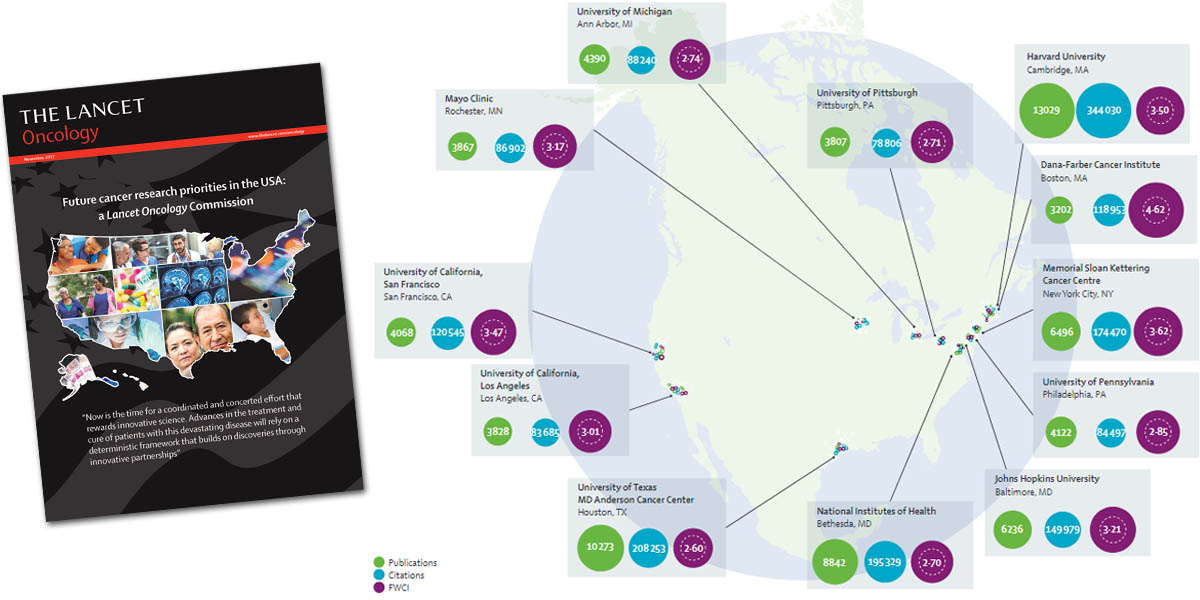The goal of SDG 5 is to achieve gender equality and empower all women and girls. The issue of sexual harassment is now at the forefront thanks to the #metoo movement and the countless women coming forward with stories of facing harassment and inappropriate conduct at work. As a result, organizations are starting to change their policies and practices with a renewed awareness and emphasis on training.
Globally, agriculture has intensified during the past 50 years due to increased mechanization, changes in the timing of farming operations, grassland conversion to cropland, and increased agrochemical inputs. Birds associated with farmlands and grasslands in North America have experienced severe declines over the last several decades, prompting the need for a comprehensive review of the drivers, mechanisms and magnitude of effects on bird populations.
A fundamental shift in how cancer research is conducted and how cancer care is delivered in the United States is required in order to deliver on the Cancer Moonshot initiative, according to a major new report called The Lancet Oncology Commission: Future Research Priorities in the USA. Authored by over 50 leading oncologists, including members of leading US cancer organizations, the report sets out 13 key priority areas, each with measurable goals, to focus the $2 billion of funding released to the National Cancer Institute (NCI) as part of the 21st Century Cures Act.
The report is authored by over 50 leading oncologists, including members of leading US cancer organizations, and sets out 13 key priority areas, each with measurable goals, to focus the $2 billion of funding released to the National Cancer Institute (NCI) as part of the 21st Century Cures Act. The report sets out a detailed road map to deliver on the Blue Ribbon Panel recommendations, including a focus on prevention, a new model for drug discovery and development, a vast expansion of patient access to clinical trials, and an emphasis on targeted interventions to improve cancer care for underserved groups, specifically children, cancer survivors and minority groups.
The Cancer Moonshot initiative directly supports SDG 3, Target 3.4 and Indicator 3.4.1. Joe Biden, former VP, and YS Chi, Chairman of Elsevier and Director of Corporate Affairs at RELX Group, received Humanitarian of the Year awards from the United Nations Association of New York (UNA-NY).
Climate change is modifying global biogeochemical cycles. Microbial communities play an integral role in soil biogeochemical cycles; knowledge about microbial composition helps provide a mechanistic understanding of these ecosystem-level phenomena. Next generation sequencing approaches were used to investigate changes in microbial functional groups during ecosystem development, in response to climate change, in northern boreal wetlands.
How can innovations in chemistry, energy, and biotechnology jointly be applied in low-resource settings for the benefit of a community?
This LabLinks meeting combines the expertise in the applied biosciences of Trends in Biotechnology, Joule’s interest in both scientific and sustainability developments in energy, and Chem’s focus on basic chemical science with relevance to the United Nations Sustainable Development Goals.
We put to work recent efforts to decolonise trauma theory in the context of our experience of writing and performing in the Philippines our testimonial theatre play about Canada's Live-In Caregiver Program (LCP). The play, a collection of monologues based on verbatim scholarly research transcripts, was performed in Manila in November 2013 and October 2014, first as professional and then community theatre.
This article is taken from the series "The View From Here", in which farming women from around the world give an insight into rural life. From the challenges of making an income to support the family and local economy to dealing with extreme weather and untamed lands, these women give their unique perspective on working in a male-dominated industry. It helps to highlight the importance of SDG 5, Gender equality.





